
Proper food storage
Improper storage of your food can negatively impact its flavour and health benefits, and force you to toss it out. Here’s how to maximize the potential of your grocery haul, avoid food-borne illness-and stop wasting money on spoiled food that ends up in the compost bin.

Set the right temperature
Brenda Watson, executive director of the Canadian Partnership for Consumer Food Safety Education, recommends a fridge’s temperature be set between 0ºC and 4ºC (32ºF to 39ºF). The freezer should be a frosty -18°C (0ºF). If your appliance doesn’t have an internal temperature monitor, you can buy a thermometer from a hardware store and mount it in your fridge.
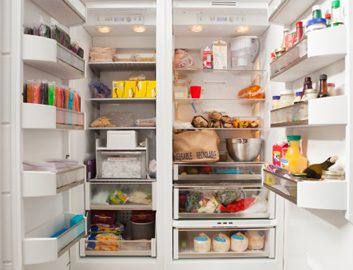
Don’t overload your fridge
Along with the correct temperature, healthy food protocol includes refrigerating perishable items within two hours of purchase or preparation, and keeping the fridge from being overloaded-a feat that can prove difficult at certain times of the year. “During the holidays when people are entertaining, there’s a lot of food being stored in a fridge, but the air inside needs to circulate around it in order for the refrigerator to do its job properly,” explains Watson. She recommends purchasing only the fresh foods you need and, for frozen foods, relying on a stand-alone freezer for extra storage. “And if you haven’t been using that freezer, plug it in a day ahead, and check the temperature is -18º before you start putting anything inside.”
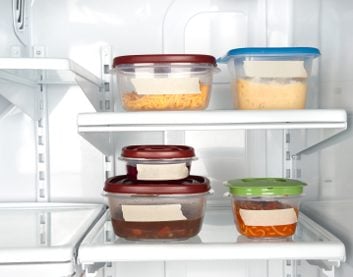
Put foods in their place
Your fridge will keep groceries fresh for several days, but it won’t maintain their goodness indefinitely. “The refrigerator slows down the growth of bacteria, but it doesn’t halt it,” says Watson. Stay on top of best-before dates by going through the contents of your fridge and cleaning it out regularly. Here are a few tips to keep in mind:

Cheese
If strongly scented foods such as chopped onions are stored nearby, cheese can easily absorb their smells and tastes. To keep your cheese at its best, one recommendation from the Dairy Farmers of Canada is to keep it in a separate enclosed space, away from encroaching aromas and tastes. It is also advisable to tightly cover opened cheeses (whether soft or hard) in a plastic wrap to help protect them from moisture and mould. If you bought it wrapped in paper, remove the paper and replace with clingy plastic wrap, or it will dry out. For brine- or water-packaged cheeses such as bocconcini or feta, keep them in their liquid, and rinse off cheese as you use it. Hard cheese like Parmesan will keep for up to 10 months in the fridge, and soft cheese will last about one week. Keep an eye on expiry dates.

Milk
A carton or bags of milk should be stowed on an internal shelf near the back of the fridge where it will benefit from chillier temperatures. If you make the mistake of stocking your milk in your fridge’s door where it’s not as cool, Desiree Nielsen, a Vancouver-based registered dietitian, says its nutritional benefits will take a hit: Every time you open the fridge door, heat and light will start to destroy milk’s photosensitive vitamins such as A, B12 and riboflavin.
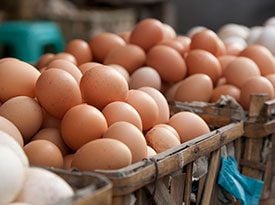
Eggs
The Egg Farmers of Alberta advise that eggs require a steady, cold temperature, so skip your fridge’s egg storage area in the door and keep them inside their carton on a middle or top shelf. The carton keeps eggs from absorbing odours from other foods, and keeps them fresher. Nielsen says the package also insulates them from temperature fluctuations and light, two factors that can prematurely spoil eggs. Eggs remain fresh in the fridge for three to four weeks, but check the date on the package.
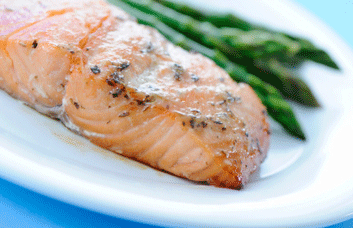
Meat and fish
Relegate these products to the fridge’s meat drawer or a drip-proof tray on the lowest shelf, so uncooked juices don’t leak and possibly contaminate other foods with bacteria such as salmonella or E. coli. For extra protection, “when you buy fish or meat, put the packaged product in a bag and then store it in the refrigerator in that bag,” says Nielsen. “If it drips, it’s more likely to stay inside the bag than spill out.” Cold cuts need to be kept particularly cold, and should be wrapped and placed in the meat drawer-never in the fridge door. Unused cold cuts will keep for two weeks, but once the package is opened, they’re good for three to four days.
If you’ve bought large quantities of raw meat, use your freezer for safe storage. “To freeze, take the meat out of the package it came in, put it in a food-grade plastic freezer bag, squeeze out any air and then double-wrap the whole package with foil,” says Watson. Don’t forget to label each parcel identifying the meat, plus the date it was frozen. Fresh steaks, roasts, fish, pork and chicken will last only two to four days in the fridge, but they can be kept for several months in the freezer.
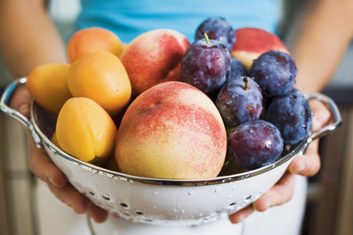
Fruit
Fruit and vegetables should be stored separately from each other. Nielsen says that several kinds of fruit, including apples, emit a gas called ethylene that can cause certain vegetables (leafy greens, carrots, cauliflower, cucumbers, eggplant and broccoli) to ripen and spoil prematurely when kept in close quarters in the fridge. Use your refrigerator’s crisper drawer to keep these fruits away from sensitive vegetables and, in an ideal environment, with low humidity. Fruit should be kept in its original packaging, or in a loosely closed plastic bag. As a rule of thumb, delicate fruit such as berries should be eaten within a few days. Hardier fruit, such as apples or oranges, can last a couple of weeks in the fridge. For a list of fruit and vegetables that don’t need to be refrigerated, see the sidebar below.
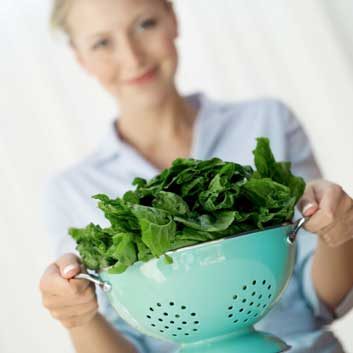
Vegetables
Veggies such as Brussels sprouts, eggplant, artichokes, turnips, beets, mushrooms, carrots, cauliflower and lettuce varieties prefer high humidity, says Nielsen, so keep them in the compartment labelled accordingly. Vegetables are best stored in their original packaging, or in a loosely closed plastic bag. In the case of bagged lettuces, they should also be kept in their packaging, but make sure that the bag has perforations. “If there’s no venting, it’s a good idea to open the bag a little bit so that condensation doesn’t collect inside,” says Nielsen. This moisture, combined with a lack of oxygen, can create slime rot, the goopy bacterial coating that can collect on leafy greens as they decompose. Lettuce varieties such as iceberg, romaine and spinach will last up to one week in the fridge. Brussels sprouts, eggplant and mushrooms will keep for five days. Artichokes, turnips and cauliflower will remain fresh for one week. Beets and carrots will keep for three to four weeks.

Condiments and oils
Watson and Nielsen both agree that opened condiments such as ketchup, maple syrup, salad dressing, mayo, mustard, pickles, salsa and relish can be placed either on shelves inside the fridge’s doors or at the front of fridge shelves. Most condiments contain natural preservatives in the form of vinegar, sugar or salt, so they don’t require the coldest territory inside the fridge. Oils such as nut, flax and sesame are fine here, too. Typically, ketchup, relishes and jams can last up to six months in the fridge; maple syrup and mustard, up to a year; and mayo, two to three months.
Related:
• 14 foods you shouldn’t keep in the refrigerator
• 15 diet-friendly foods for your fridge
• 5 steps to clearing out your pantry
